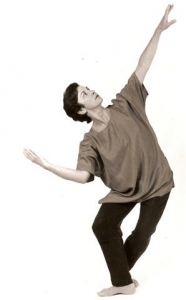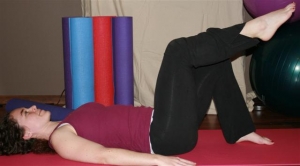Balance



Let’s try it. If you haven’t already, read yesterday’s post. Today, let’s practice. Have a seat on the floor with your legs crossed or sit on an exercise ball. Create a long spine with good posture.
We are going to work your kegel and abdominal muscles. (If you have a weak bladder, you can do this sitting on the toilet).
Let your stomach relax.
Exhale to engage the abdominal muscles. Test your range of motion and divide it into five parts. When you engage tighten the muscle more and more (up to five times).
Then inhale to start to relax the muscle–one elevator floor at at time.
Repeat this for the kegel. Then try to do both at the same time.
Don’t feel like this exercise is only for beginners. It is part of the basis of Pilates, so it is good to practice. Remember, you want to be in control of the muscles when the elevator goes up AND when it goes down.
Joseph Pilates first sentence in his book, “Return to Life Through Contrology” is: “Physical fitness is the first requisite of happiness.”
I recognize that everyone is different, and I would never claim that this is true for everyone, but I know it’s true for me. If I let life get in the way of my workout regime I do not feel well–both mentally and physically.
Do you know what amount of exercise your body craves and needs in order for you to operate and peak performance?
Remember that Joseph Pilates called his exercises “Controlology.” The whole concept is being in control of your muscles during the exercises and then incorporating that into daily life–engaging your core for a simple task like standing in line or walking.
We can’t control everything that happens in life, but we can control our reaction to it, and we can control our behavior. Think about extending to concept of what you have control over in life beyond just your muscles. It is very empowering to realize that you have control over your fate (to some degree). You can make choices that make you healthier and happier. It’s up to you. All you need to do is decide to be in control and recognize that while you may not have the power to change everything in life you certainly have say in how you feel about the world around you and what part you will play in it.